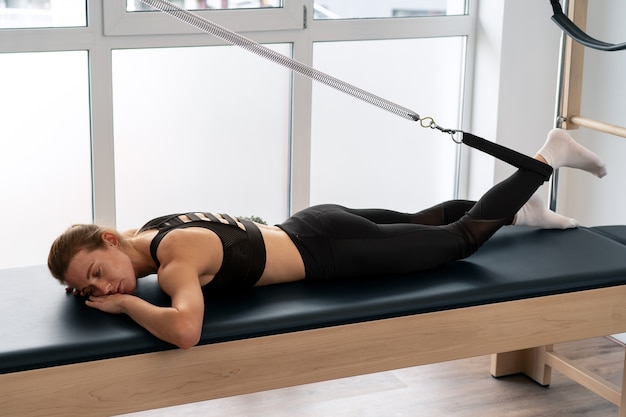
Fascia Training is a relatively new concept in the fitness world, which focuses on the connective tissues surrounding the muscles rather than the muscles themselves. Before diving into fascia exercises, let’s first understand what fascia is.
Fascia is the connective tissue that runs throughout your body, surrounding your muscles, organs, and bones. It’s the largest sensory organ in the body, even larger than the skin, and has four main functions. When fascia is healthy, it’s resilient, flexible, and resistant to injury. However, if it becomes impeded or constricted, it can cause pain, limited movement, and other restrictions that can affect daily life or exercise.
A well-rounded fascia exercise program can increase both strength and flexibility while reducing injuries, pain, or discomfort caused by tight or restricted fascia. You’ve likely seen people at the gym or after a fitness class using foam rollers or rubber balls to massage various body parts. While these can help with fascial health, there’s more to fascia exercise than that.
There are four different ways to exercise your fascia, and a comprehensive fascia exercise program should include elements from each.
One popular way to stretch your fascia is through yoga. Almost every yoga pose involves a full-body movement, even if it targets a specific area. If you’re new to this, you can start with simple yoga poses at home to stretch both your muscles and your fascia.
If yoga isn’t your thing, Pilates is another excellent option. Similar to yoga, it takes a whole-body approach, focusing on both strength and flexibility, but offers a more core-focused workout. For a gentler alternative, Tai Chi is another effective way to stretch your fascia.
Fascia needs to stretch and then spring back, much like a slinky. When you perform a movement, the fascia and other connective tissues need to return to their normal length after stretching. To strengthen this ability, incorporate dynamic exercises. Adding plyometric exercises, skips, hops, taking the stairs, or even jumping around to music can train the elastic storage capacity of your fascia and prevent conditions like plantar fasciitis. Try adding a dynamic warm-up of high knees, butt kicks, speed skaters, and plyometric pushups before your workout or dedicate a day to fascia exercises.
Proprioception, or being aware of where you are in space, helps your fascia support and communicate better. This can improve coordination and fluidity of movement, both in the gym and daily life. Fascia exercises for proprioception are done slowly and with control, ideally including some balance or stability challenges.
The last aspect of fascia exercise, and perhaps the most well-known, is fascial release. This involves foam rolling or using other tools for myofascial release. The pressure and release stimulate fluid exchange and the removal of metabolic waste. Foam rolling should be done slowly and steadily. Save the fast foam rolling for pre-workout routines to get your muscles ready. For areas you can’t reach or if you prefer not to do it yourself, consider getting a myofascial massage from a therapist.
Remember, everyone is different and moves differently, so focus on how exercises feel for you rather than comparing yourself to others. Hydration is crucial for fascia health; no matter how much you exercise, without enough water to keep your muscles and fascia hydrated, you may experience restrictions. Rest and recovery are also important, allowing your fascia and muscles to repair and strengthen. Nutrition plays a role too; eating fewer inflammatory foods and ensuring you get enough vitamin C and collagen can improve connective tissue health.
There are many benefits to fascia exercise that can help you both in and out of the gym. Once you start moving better and with less pain, you won’t want to stop.